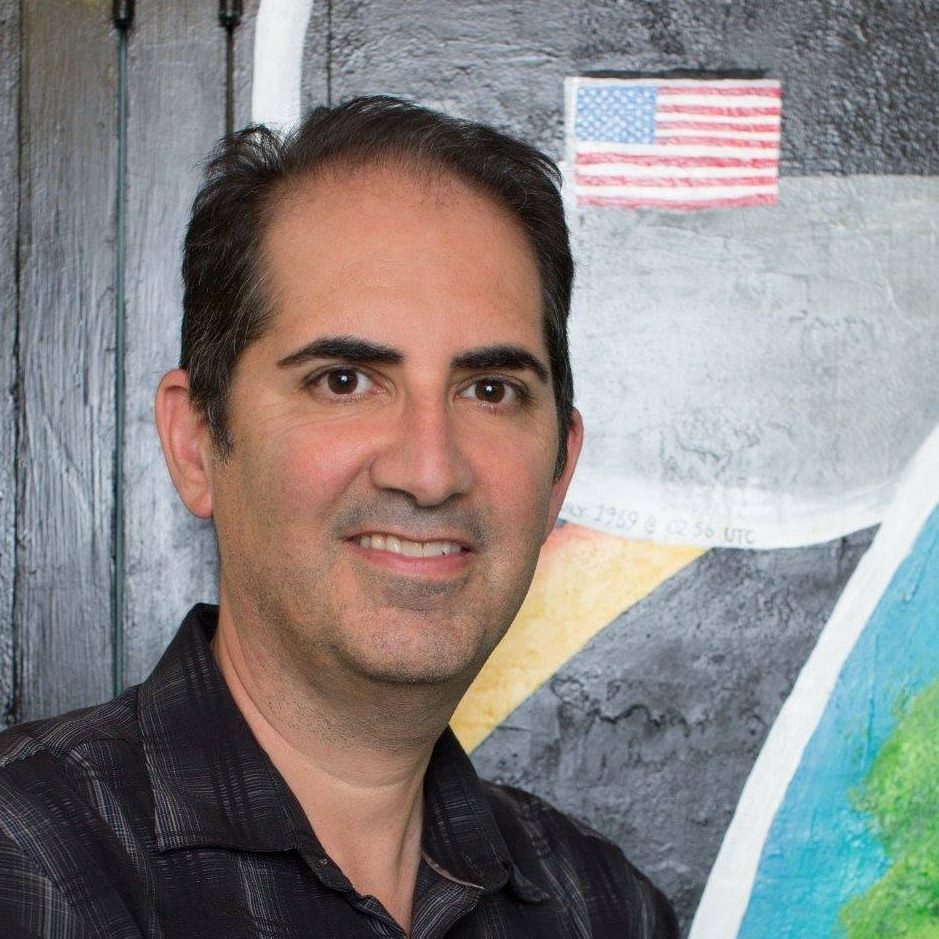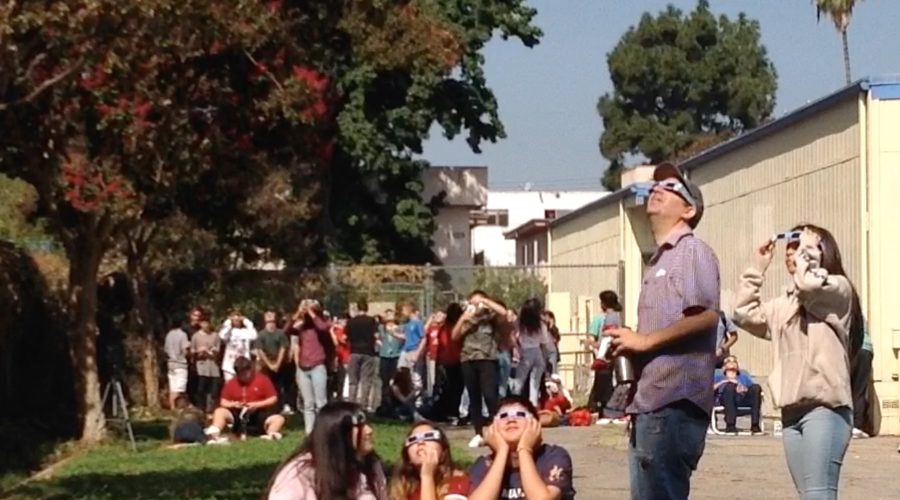Eclipse from an LA classroom
Looking at the partial solar eclipse in Los Angeles through safety glasses allowed me to see some of the Sun’s corona which I will never forget. As a classroom science teacher, I was not fully able to seize the teachable moments to the extent I envisioned. The eclipse was predicted with accurate precision thanks to science. The experience of witnessing an eclipse can transcend a scientific method or textbook knowledge, although the experience could later be used to motivate both. My school was awesome in that it purchased glasses for every student. But we may have came up short in distributing those glasses properly and in educating each other about the eclipse.
We started school last Tuesday with just enough time to meet each other. Over the next three days I taught about the eclipse most of the time, frantically leading students through activities, videos and Explore Learning Gizmos. We would be transitioning from recess to another class during the peak of the eclipse so I got permission for all of my students to meet me at the end of recess to see the eclipse for an extra 30 minutes. I was nervous about managing 150 students by myself but I was willing to risk it. I negotiated with the PE dept for their grass field in the furthest reaches of our campus. Arranged to have some tarps put up.
And then on Friday we got the news- in order for students to see the eclipse they needed signed parent permission forms, and the schedule was modified into a three hour lockdown mode. The snack break recess was cancelled and we each had one class for three hours.
Over the weekend I got a big box of Sun Chips and some fake Moon Pies and arranged for some Eclipse-Pizza to be delivered around 11am to the field. It would still be awesome, right?
But Monday morning the field was not available because manure was being put down throughout the field and that is toxic and unpleasant.
So I had to scramble to find a new location, to time it properly so students wouldn’t be too bored, to decide if I wanted to keep my class separate from the masses congregating elsewhere. Since my appointed class were 8th graders and all my other classes are 6th graders, I opted to keep them apart.
The students were ok, some were into it, some were bored, all appreciated the work I had put into it. When we were back in the classroom the live feed from NASA or the Exploratorium wouldn’t load through the district filters so I had to use my cell phone as a hotspot to show my students any of that. They did love the surprise of getting pizza, another expense I was happy to make to enhance the event.
Turns out almost our entire school got their forms in and got to see the eclipse, so while it wasn’t easy, it went pretty well, all things considered. That means the overwhelming majority of our students were excited enough to nag their parents to let them see it and they wanted to learn all about it!
It’s over but it’s really not over. It should be an event that I can reference in the curriculum for years to come, making astronomy, biology and every aspect of science more real for my students. I’ll keep doing that. That’s why I felt an enormous amount of pressure to get the eclipse right, because there was a lot at stake.
Here’s an article from the LA Times, a published letter to the editor a few days later and some online comments…
Students were still buzzing today about the eclipse, but it wasn’t all positive. Here are some representative reflections from their point of view:















